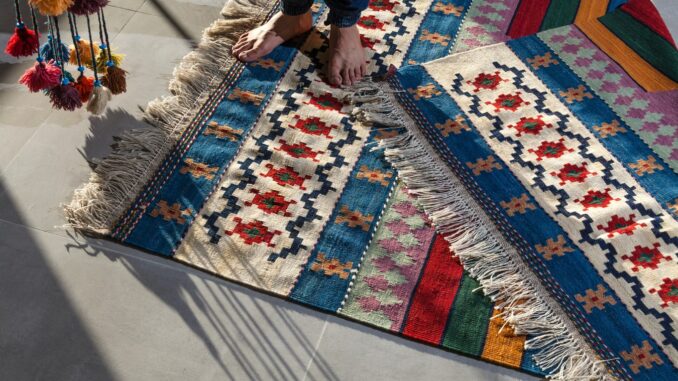
There are multiple hairpiece types available with colorful shapes and accoutrements on the request. The most common are polypropylene ( deduced from petroleum), Arraiolos, Persian, Kilim, Sisal, Fur, Skin, Belgian, Chinese, and Cotton. Below we explain each of these types for you to understand a little better of the carpet you have at home.
10 Popular Rug Types
Hundreds of hairpiece types mean they’ve a thousand different characteristics. So when you know the fabric types of the individual carpet types and the quality. You can fluently get relieve of it without taking any professional help. But for better cleaning, a professional touch is going to be needed.
1. Polypropylene:
Polypropylene hairpiece types are made with synthetic filaments. This type of hairpiece can have unheroic stains caused by the attention of liquids, similar as water and urine. In the case of urine, the threat of the stain not coming out due to the high acidity rate is veritably high, which causes obsession on the vestments and, in some cases, leads to fiber spoilage.
A specific of polypropylene carpets is the appearance of rasped vestments after drawing. This is because, at the time of manufacture, the thread goes through a wringing process and, during cleaning, it goes through a crooked process, which results in a rasped appearance.
2. Arraiolos:
Arraiolos hairpieces are made with natural hair fiber. Utmost of the hairpiece is handcrafted, so when there’s redundant water, it becomes crooked, as it doesn’t have a support base.
In industrialized Arraiolos carpets, color migration can also do due to inordinate dyeing in the plant.
3. Persian:
Persian hairpiece types are made of natural hair and bepainted with natural colorings ( flowers, roots, vegetables). Some are handcrafted, and others industrialized. The original bones are made by crafters, and there are reports of hairpieces where the manufacture takes roughly 400 days.
After completion, this type of carpet goes through a process of burning the redundant filaments of the carpet and also washing with a lot of water. For this type of hairpiece, there’s no threat of color migration.
The underpart of the hairpiece also forms delineations, each with its meanings and origins. Persian hairpieces should be gutted precisely by a professional carpet drawing like Carpet Cleaning Brixton.
4. Kilim:
Kilim hairpiece types are made of natural fiber, stand out for their geometric designs, and can be used on both sides. They’re veritably analogous to a hammock.
5. Sisal:
Sisal hairpiece types are made of natural fiber from desert cacti. Water shouldn’t be fitted into this type of carpet, as the cactus fiber absorbs a lot of liquid, causing it to come “ blown” and, over time, misshaped and full of dark stains.
Still, there’s no way to remove the stain, as the carpet absorbs the liquid veritably snappily, If this happens. Drawing it must be done in corridor.
6. Leather:
The leather hairpiece types are made naturally, generally with the cowhide itself. In this material, no mechanical scrubbing should be done, nor the nonstop use of water.
7. Fur:
The fur hairpiece types are made of lamb’s hair, with completely handcrafted manufacture. The hair is fused to a high disunion mat, which can beget the coat to shift from the mat. In dyed hair hairpieces, it’s necessary to carry out drawing in corridor. In some cases, this type of hairpiece may have a bad odor at the end of the process.
8. Belgian:
The Belgian hairpiece is made with acrylic viscose and cotton borderline. This mat has a low relief appearance and doesn’t have a support base. When drawing, pay attention to gashes, as this is a fine-textured hairpiece type. At the end of cleaning, the carpet filaments may appear stiff, but this is normal.
9. Chinese:
The Chinese hairpiece types are made of hair, silk, or cotton, so they must be gutted in corridor. There are models of the Chinese hairpiece embossed. It’s necessary to be apprehensive of the appearance of unheroic spots due to redundant water.
10. Cotton:
Cotton hairpiece types are made of raw cotton. This type of hairpiece is made of jute or sisal, so if there’s redundant water, unheroic stains can do after the carpet is fully dried. Still, stains don’t appear when it’s wet, so it’s necessary to be careful and perform cleaning in corridor.
Conclusion:
All of these ten hairpiece types have enough emotional aesthetics anddesign-wise. But only you can maintain the buff of the carpet when you’re going to follow an excellent sanctification governance. We hope this information was helpful.

Leave a Reply